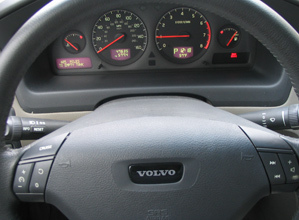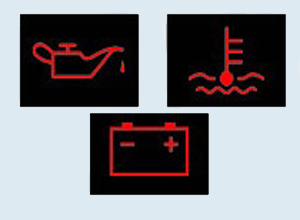Instrumentation
In order to be able to operate your vehicle safely, you must know the functions and locations of all the interior mechanisms of your car.

The instrument panel contains gauges that include the following:
- Speedometer, which indicates the speed in both miles and kilometers per hour
- Tachometer, which indicates rotations in the engine in revolutions per minute (RPMs)
- Odometer, which indicates the total number of miles your car has been driven since it was manufactured
- Fuel gauge, which shows the fuel level in your car's fuel tank
- Oil gauge, which shows oil level

Warning lights are provided on your car's instrument panel. They light up in case of a serious problem. There are three kinds of warning lights:
- Oil Pressure Warning Light
- Temperature Warning Light
- Battery Low Warning Light
Temperature Warning Light/Gauge: this light goes on when the engine temperature or the radiator's coolant is too hot. In some vehicles, a gauge is used that would show the needle in the warning zone of HOT.
If this warning light comes on while driving, STOP as soon as you can at a safe place and shut the engine off.
Never remove the radiator cap to check the coolant level when the engine is hot. The coolant is at boiling temperature and under pressure. If the cap is released, the hot coolant will release with pressure and can cause severe burns if you are standing too close.
Oil Pressure Warning Light: this light goes on when the engine oil is not circulating at the required pressure. Some vehicles have an oil pressure gauge that reads LOW when the engine's oil pressure is too low. If you see an oil pressure warning while driving, STOP immediately at a safe place and turn off the engine.
Battery Low Warning Light: when this light goes on or the battery gauge reads LOW, this means that the battery power is running out.
© 1997-2025 DriversEd.com. All rights reserved. Please see our privacy policy for more details.






